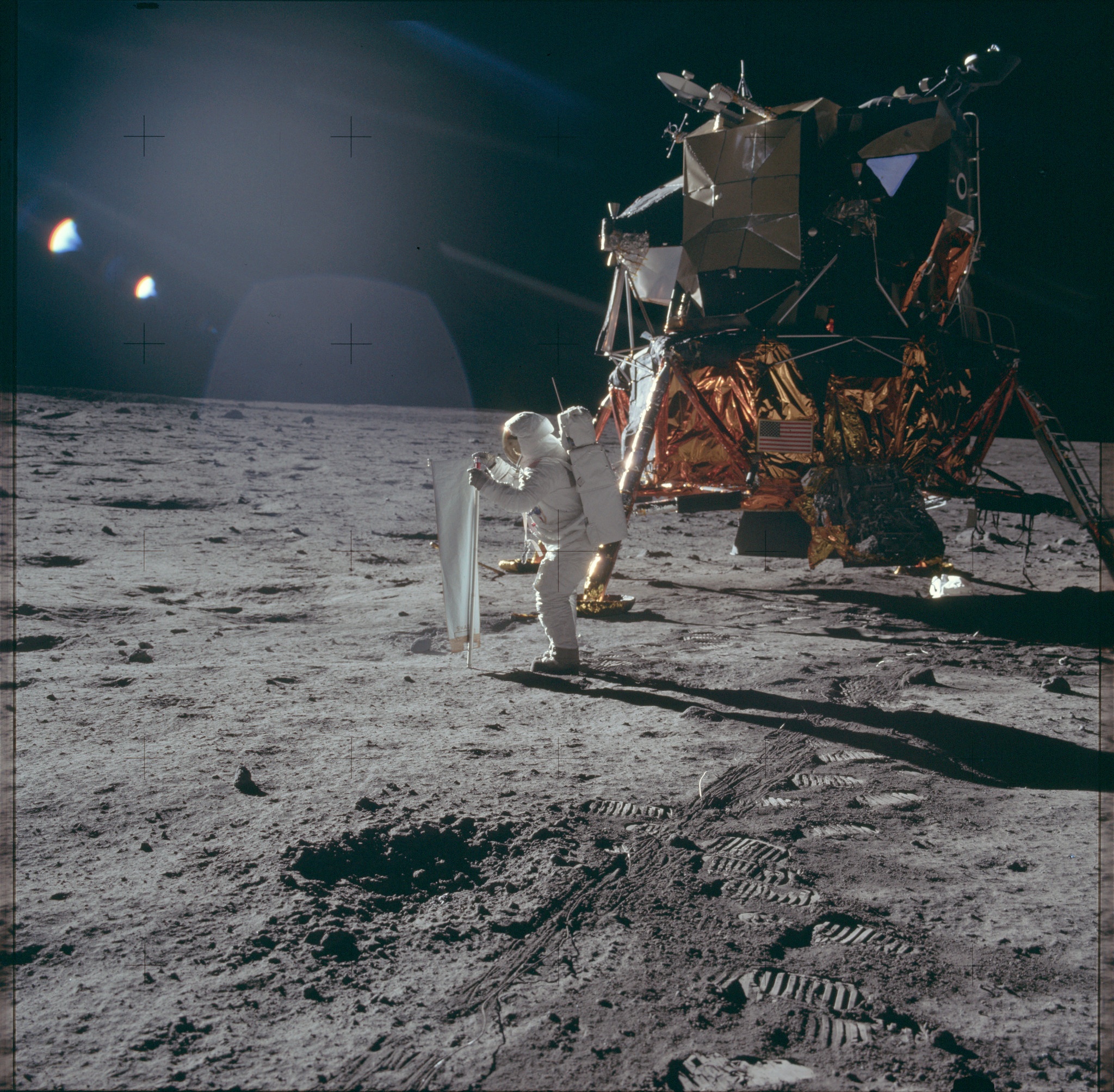

Apollo 11 at Tranquility Base on the Moon. Credit: NASA
A lunar moon dust sample with a strange history made its way to the auction block yesterday.
On July 20, 1969, NASA astronaut Neil Armstrong stepped off the landing pad of the Eagle lunar lander and into history. About eight minutes afterwards, Armstrong performed a crucial task, and collected a small ‘contingency sample’ of the Sea of Tranquility landing site. The sample was a small assurance that, in the event of a hasty departure—due to say, a malfunction or landing site instability—they did indeed still manage to retrieve the very first lunar material for return to Earth.


The contingency sample pouch that Armstrong placed in his spacesuit left thigh pocket contained just under a kilogram of material. That sample now resides at Johnson Space Flight Center’s Lunar Sample Laboratory along with a majority of the 21.3 kilograms of space rocks brought back by Neil and Buzz from the lunar surface… but the sample pouch used and a small amount of ‘lunar dust’ discovered inside have a fascinating post-script story to tell.
The sample bag itself was involved in several rounds of intrigue and legal battles over the years. First, when a collection of Apollo era artifacts went missing from the Kansas Cosmosphere and Space Center in 2003, the U.S. Marshall office seized the personal collection of then-Cosmosphere president Max Ary, to include the sample bag. The bag then went up for government auction as part of a court-ordered restitution.
In 2015, Chicago lawyer and space historian Nancy Lee Carlson came across the bag on a federal auction site, and placed successful a bid on it for $995. At the time, it was unknown that the bag was in fact from the Apollo 11 mission. Over the years, it had been mid-identified as belonging to Apollo 17—a mission which did not carry a contingency sample bag.
On a hunch, Carlson sent the bag off to NASA for verification. Planetary mineralogist Roy Christoffersen opened the bag, and actually managed to sample a small amount of lunar dust still clinging to the seams inside. The dust matched the composition of the Apollo 11 samples precisely, positively identifying the bag as Neil’s first historic sample collected on the Moon.
What followed was a protracted legal battle between Carlson and NASA. NASA has never allowed the private sale of Apollo Moon rocks in the past, and the only lunar material that has gone up for auction previously was three tiny rocks weighing just 0.2 grams from the 1970 Soviet Luna-16 mission, which fetched $855,000 dollars at a Sotheby’s auction in 2018. Ultimately, the courts ruled in favor of Carlson, and NASA returned the six aluminum cylinders containing just 0.2 grams of lunar dust. For context, a U.S, dollar bill weighs exactly one gram.
The sample bag itself netted $1.8 million dollars at auction in 2017. The lunar dust sample went up for auction at Bonhams yesterday along with other space paraphernalia, including a fragment from the discarded rocket booster that launched Sputnik-1, and a mockup from the first successful U.S. satellite mission Explorer-1. Ultimately, the gavel fell on the Apollo 11 moon dust samples at $504,375 dollars, shy of the hoped for $800,000 to 1.2 million dollar bid.
Still, not a bad return on a thousand dollar lunar sample bag, with a fascinating story of space history to tell.
Lead image credit: Apollo 11 at Tranquility Base on the Moon. Credit: NASA
Astronomers have been battling threats to their clear skies on all fronts lately. One of…
If you were Captain of the first USS Enterprise, where would you go!? Humanity is…
Now is the best time to observe Mars in 2025. Mars from 2014. Credit: Paul…
Scheduled for launch in 2027, the Nancy Grace Roman Telescope is slowly being readied for…
Few places in the solar system are better suited to a balloon than Titan. The…
We reported before about a NIAC-funded project known as the Lofted Environment and Atmospheric Venues…